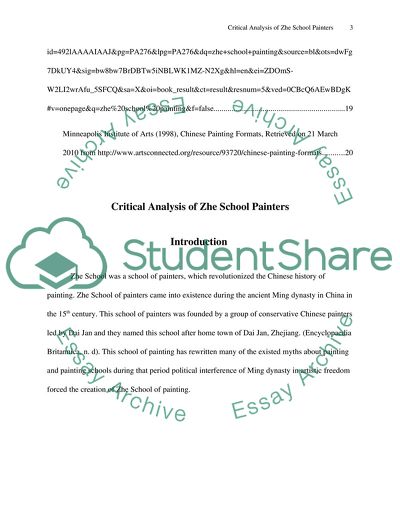Cite this document
(“Distinctive Features of the Zhe School Painters Research Paper”, n.d.)
Distinctive Features of the Zhe School Painters Research Paper. Retrieved from https://studentshare.org/visual-arts-film-studies/1734982-what-is-so-distinctive-about-zhe-school-painters-how-are-they-assessed-critically
Distinctive Features of the Zhe School Painters Research Paper. Retrieved from https://studentshare.org/visual-arts-film-studies/1734982-what-is-so-distinctive-about-zhe-school-painters-how-are-they-assessed-critically
(Distinctive Features of the Zhe School Painters Research Paper)
Distinctive Features of the Zhe School Painters Research Paper. https://studentshare.org/visual-arts-film-studies/1734982-what-is-so-distinctive-about-zhe-school-painters-how-are-they-assessed-critically.
Distinctive Features of the Zhe School Painters Research Paper. https://studentshare.org/visual-arts-film-studies/1734982-what-is-so-distinctive-about-zhe-school-painters-how-are-they-assessed-critically.
“Distinctive Features of the Zhe School Painters Research Paper”, n.d. https://studentshare.org/visual-arts-film-studies/1734982-what-is-so-distinctive-about-zhe-school-painters-how-are-they-assessed-critically.


